





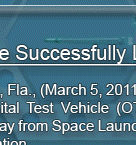



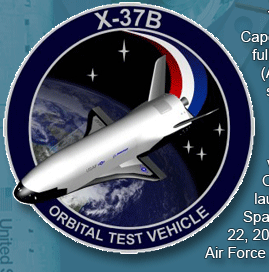
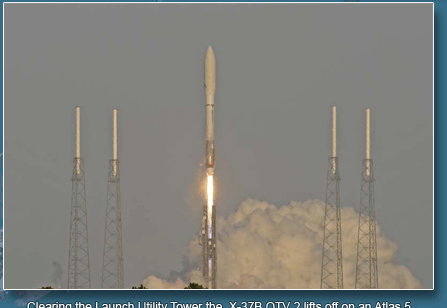



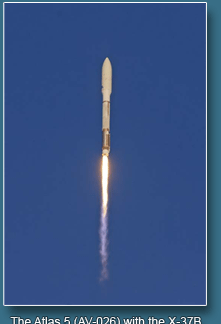


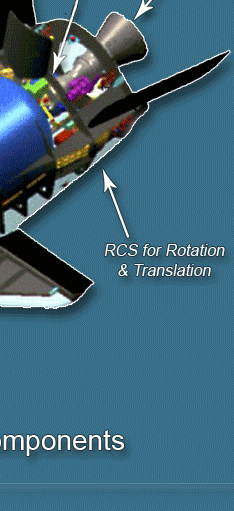
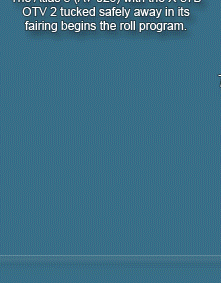
 |
|
|||||||||||||||||||||||
 |
|
|
|
|
|
|
|
|
|
|
|
|
|
|
|
|||||||||
 |
 |
 |
 |
 |
 |
 |
|
|||||||||||||||||
 |
 |
|
|
|||||||||||||||||||||
|
|
 |
|
||||||||||||||||||||||
 |
|
|||||||||||||||||||||||
|
|
|
|||||||||||||||||||||||
|
|
|
|
|
|||||||||||||||||||||
 |
|
|||||||||||||||||||||||
 |
 |
 |
|
|||||||||||||||||||||
 |
|
 |
|
|||||||||||||||||||||
|
|
|
|||||||||||||||||||||||
 |
|
|||||||||||||||||||||||
|
|
|
|
|
|
|
|
|
|
|
|
|
|
|
|
|
|
|
|
|
|
|
|
|
|
|
||||||||||||||||||||||||||||||||||||||||||||||||||||||||||||
United Launch Alliance Successfully Launches Second OTV Mission Cape Canaveral Air Force Station, Fla., (March 5, 2011) � A United Launch Alliance Atlas V rocket successfully launched the second Orbital Test Vehicle (OTV-2) for the Air Force�s Rapid Capabilities Office (AFRCO) at 5:46 p.m. EST today from Space Launch Complex- 41. The OTV, also known as the X-37B, supports space experimentation, risk reduction, and concept of operations development for long duration and reusable space vehicle technologies. The first OTV mission was also successfully launched by a ULA Atlas V from Space Launch Complex-41, on Apr. 22, 2010. It later landed at Vandenberg Air Force Base, Calif., on Dec. 3. �The ULA team is proud to have played a critical role in successfully launching both of these important missions of the Orbital Test Vehicle for the Air Force RCO,� said Jim Sponnick, ULA vice president, Mission Operations. �It took a tremendous amount of teamwork to successfully launch both vehicles in less than a year. I am confident that the information collected by the Rapid Capabilities Office from these missions will lead to even bigger and bolder missions in the future. Congratulations to the combined Air Force and ULA launch team and our many mission partners that made today�s successful launch possible.� This mission was launched aboard an Atlas V 501 vehicle configuration, which includes a 5.4m diameter payload fairing. The booster for this mission was powered by the RD AMROSS RD-180 engine and the Centaur upper stage was powered by a single Pratt & Whitney Rocketdyne RL-10A engine. ___________ On 17 November 2006 the U.S. Air Force announced it would develop the X-37B from the NASA X-37A. The Air Force version is designated X-37B Orbital Test Vehicle (OTV). The OTV program builds on industry and government investments by DARPA, NASA and the Air Force. The X-37B effort will be led by the Air Force Rapid Capabilities Office, and includes partnerships with NASA and the Air Force Research Laboratory. Boeing is the prime contractor for the OTV program. The X-37B can remain in orbit for up to 270 days at a time. The Secretary of the Air Force states the OTV program will focus on "risk reduction, experimentation, and operational concept development for reusable space vehicle technologies, in support of long-term developmental space objectives." The X-37B was originally scheduled for launch in the payload bay of the Space Shuttle, but following the Columbia accident, it was transferred to a Delta II 7920. It was subsequently transferred to a shrouded configuration on the Atlas V following concerns over the unshrouded spacecraft's aerodynamic properties during launch.[18] Following their missions, X-37B spacecraft are to land on a runway at Vandenberg Air Force Base, California, with Edwards Air Force Base as an alternate site.